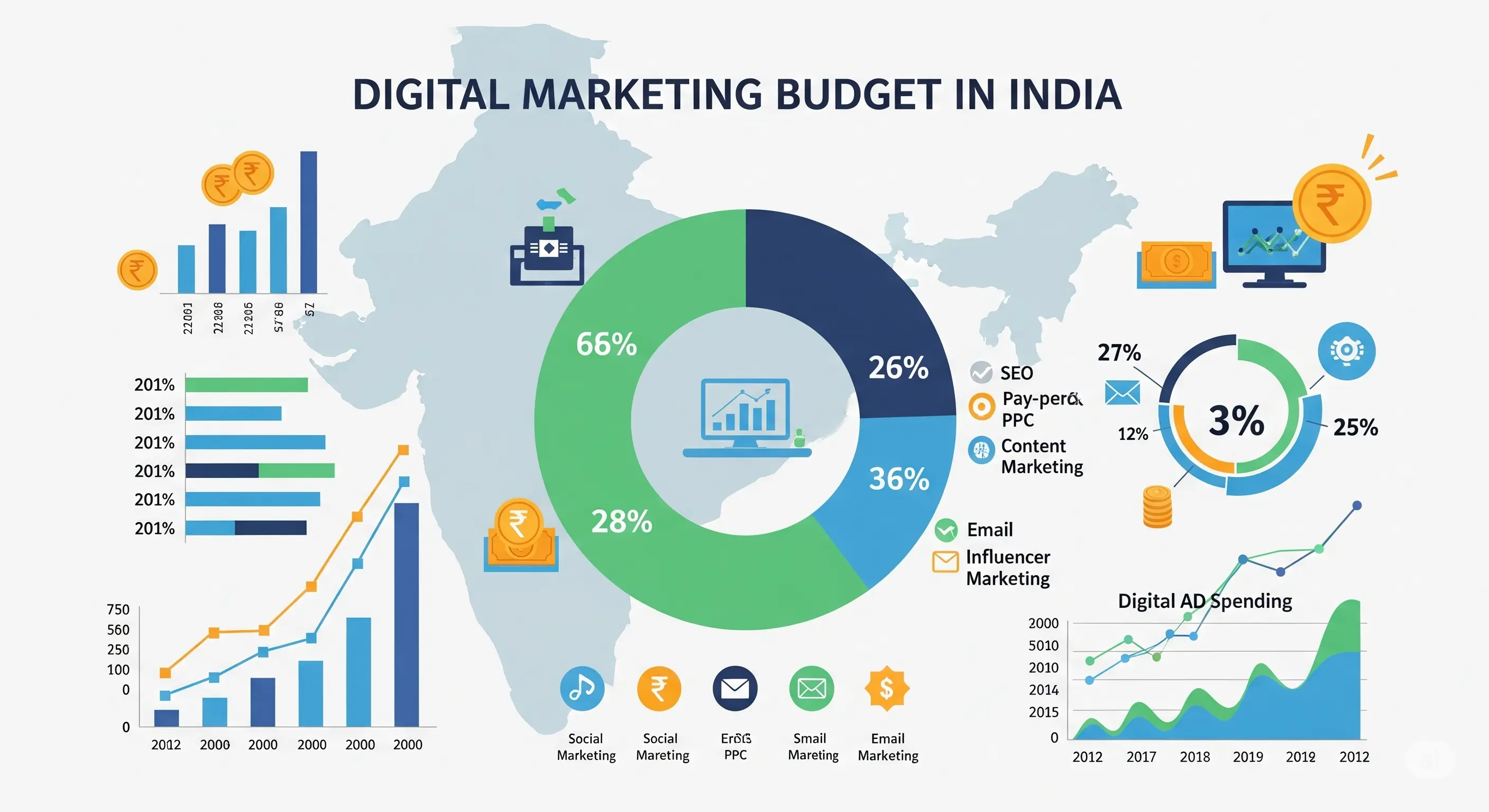In India's rapidly evolving digital landscape, a well-planned **digital marketing budget** is the cornerstone of online success. With millions of consumers coming online every year, and competition intensifying across all sectors, businesses must strategically allocate their marketing spend to cut through the noise and reach their target audience effectively. At Vermosys Techno Pvt Ltd, we believe in data-driven budgeting that maximizes your Return on Investment (ROI) in the dynamic Indian market.
1. Factors Influencing Your Digital Marketing Budget in India
There's no one-size-fits-all answer for an ideal digital marketing budget. Several factors come into play:
- Industry & Competition: Highly competitive sectors (e.g., e-commerce, fintech) often require larger budgets to gain visibility.
- Business Goals: Are you aiming for brand awareness, lead generation, sales, or customer retention? Each goal dictates different channel allocations and spend.
- Target Audience: Where does your audience spend their time online? This influences platform choice and content strategy.
- Current Digital Presence: A new business will need to invest more initially to build foundational assets like a website and SEO.
- Geographic Reach: Targeting specific cities or pan-India will impact costs, especially for localized campaigns.
2. Key Channels and Budget Allocation Strategies
A balanced approach across various channels is often most effective:
- Search Engine Optimization (SEO): A long-term investment that builds organic visibility. Budget for content creation, technical audits, and link building. Essential for e-commerce, as discussed in our E-commerce SEO India blog.
- Search Engine Marketing (SEM/PPC): Immediate visibility through paid ads on Google, Bing, etc. Crucial for quick results, product launches, and highly competitive keywords.
- Social Media Marketing (SMM): Both organic and paid social efforts. Budget for content creation, ad campaigns (Facebook, Instagram, YouTube, LinkedIn), and potentially influencer collaborations. See our Social Media India blog for more.
- Content Marketing: Creating valuable blogs, videos, infographics, and guides. This supports SEO, SMM, and builds brand authority.
- Email Marketing: Cost-effective for nurturing leads and customer retention. Budget for email platform subscriptions and creative development.
- Influencer Marketing: Collaborating with Indian influencers to reach specific niches. Costs vary widely based on influencer reach and engagement.
- Video Marketing: Given India's video consumption, investing in high-quality video content for YouTube, Reels, and other platforms is vital.
Allocation Approaches:
- Percentage of Revenue: A common starting point, typically 5-10% for established businesses, higher for startups.
- Goal-Based Budgeting: Allocate funds based on specific marketing objectives (e.g., X leads per month, Y sales).
- Competitor Benchmarking: Analyze what competitors in India are spending, but adapt to your unique context.
3. Common Digital Marketing Budget Mistakes to Avoid in India
Even with a budget, missteps can derail your efforts:
- Under-budgeting: Trying to do too much with too little leads to diluted efforts and poor results.
- Ignoring Mobile-First: India is a mobile-first market. Any budget not prioritizing mobile experience is wasted.
- Neglecting Vernacular Content: A significant portion of India's internet users prefer regional languages. Budget for translation and localized content creation.
- Not Tracking ROI: Without clear KPIs and analytics, you won't know what's working and where to optimize.
- One-Time Investments: Digital marketing is an ongoing process. Budget for continuous optimization and adaptation.
4. Measuring ROI and Optimizing Your Spend
The true success of your digital marketing budget lies in its ability to generate measurable returns. Define clear Key Performance Indicators (KPIs) for each channel and campaign, such as:
- Website traffic and lead generation
- Conversion rates (sales, sign-ups)
- Cost Per Acquisition (CPA)
- Customer Lifetime Value (CLTV)
- Brand awareness metrics (reach, engagement)
Regularly analyze your campaign performance using tools like Google Analytics, Google Ads, and social media insights. Be prepared to reallocate your budget based on what's performing best. A flexible and data-driven approach to your **digital marketing budget in India** will ensure you're always investing in the most impactful strategies for growth.

